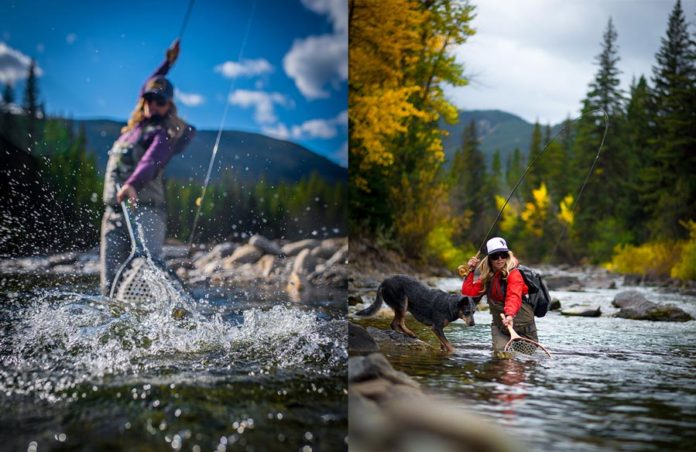Written by: Darcy Toner, Faceless Fly Fishing Media
However much we like to think that we are doing the fish a favor, even catch-and-release fishing can be stressful for them, especially some species of trout. So it is up to us as a community to do our best to cause the least amount of harm when landing any fish.
Regrettably, back when I first started fly fishing, I did not use a net. A good landing net is beneficial for a number of reasons: it ensures the safety of the fish, helps the angler land more fish, and adds an interesting element to your photography. Such a net is one of the most underrated, yet vital, trout-fishing accessories.
A net may be a pain to carry around–especially when it snags branches from nearby trees or bushes when you’re walking and wading down to your favorite fishing spot–but it is worth the effort. The simple fact is that, if you have a net, you will land more fish. How many times have you reeled in a fish only to lose it right at your feet? Probably wouldn’t have happened if you’d had a net.
Brodin Eco-Clear Nets.
Photo via orvis.com
Today, there is a wide variety of nets available on the marketplace, categorized by cost, size of the opening, handle length, and materials. There is a Classic Landing Net, which has a traditional look to it, with a short wooden handle and a mesh netting. Or, one that I have used many times and support, Eco-friendly Nets made by Brodin, which feature eco-clear netting, free of PVC and crafted from teak wood. In addition, there are several lightweight nets made from carbon fiber or fiberglass composites. Throughout the years I have used a number of different Brodin nets and can attest to their quality.

Orvis Nomad Camo Net Series.
Photo via orvis.com
Since I do a lot walking and wading, my current net of choice is the mid-length one from the Orvis Nomad Net Series. I like this net for a number of reasons: first, it is lightweight and made from carbon fiber and fiberglass, which offers a buoyant combination of materials. Another essential feature is that the netting is constructed of rubber, which is an extremely resilient material and does not get stuck in fish gills. Furthermore, this model is easy to pack, and I prefer the longer handle as it makes it easier for me to land a fish by myself.

Leaving a fish in the net means you can handle it less, which is better for the release.
Photo by Sandy Hays
Losing your net to the river can put a damper on any fishing excursion is. Luckily, there are clever gadgets designed to help keep anglers united with their nets. One of my favorite Orvis-exclusive contraptions is the Magnetic Net Holder, as it secures the net firmly to your bag with a strong magnet and a coiled lanyard. There other additional options for sale too, such as the Gear Keeper Net Retractor or Smith Creek Net Holster.

Orvis Classic Landing Net.
Photo via orvis.com
Finally, I often use a net as a prop in my photography. For any fish portraits, incorporating my net into shooting a close up of the fish itself adds depth to the photo. The second scenario is a scenic fighting shots, when I capture the act of an angler netting a fish. With all these examples combined with my personal experiences, I hope you are convinced that having a net is an essential tool for fishing and photography.
Darcy Toner and Timbre Pringle operate Faceless Fly Fishing Media, based in Calgary, Alberta, and specializing in outdoor photography.
Credit: Source link































